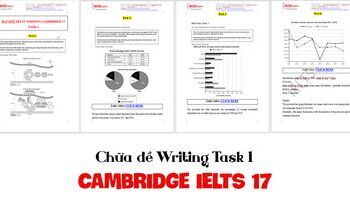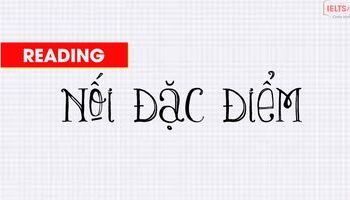Thử sức các đề Writing Task 1 của Cambridge IELTS 17 mới nhất năm 2022 nhé. Bạn xem video nữa để hiểu rõ bài học với thầy James 8.0 IELTS giải thích nhé.
Nếu bạn chưa có full bộ Cam thì tải ở link này nhé: https://bit.ly/3xD919U (bạn click và chọn nhận trong inbox nha)
1. Writing Task 1 - Map
Video chữa: https://www.facebook.com/ielts.fighter/videos/2260939144074589/
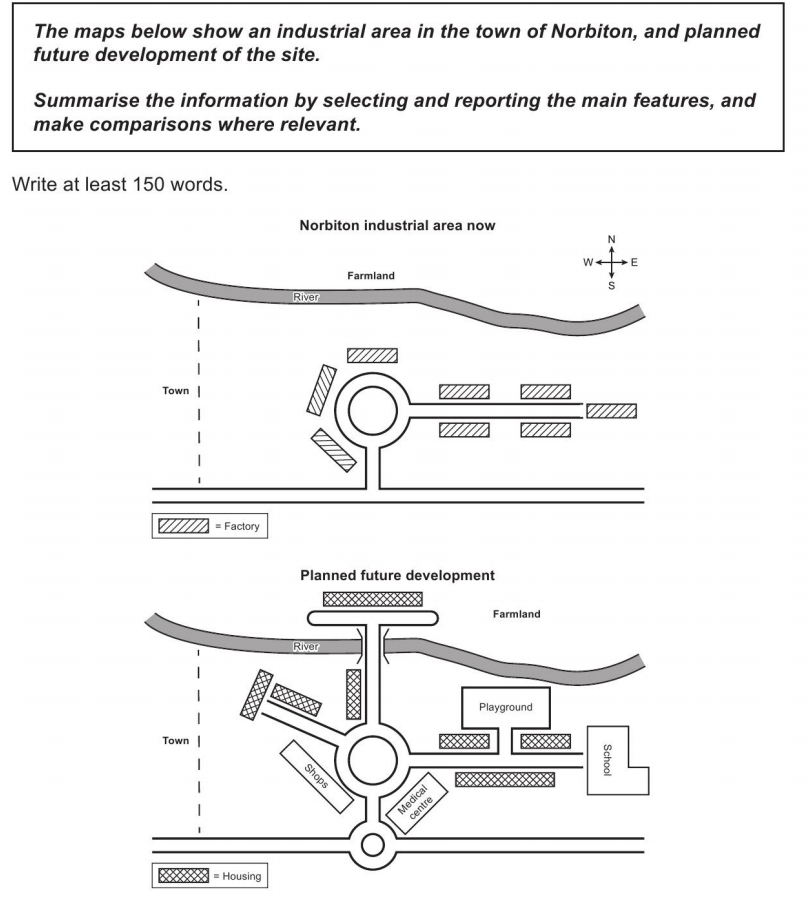
The provided maps present the current layout of Norbiton Industrial Area and a project for future development.
Overall, it is apparent that this entire industrial zone will become a residential area with life amenities.
In detail, at present Norbiton shares a boundary with a neighbouring town in the west, while a river separates this industrial area from agricultural land in the north. A roundabout in the middle of the map and a T-junction to its south connect all the main roads. The roundabout and an eastwards road are surrounded by a total of 8 factories.
In the future, all the factories will be demolished. Some new roads and a bridge will be constructed from the roundabout to 3 housing areas in the northwest and another over the river, while the farmland’s size will be reduced. Some shops and a medical centre will be built near the central roundabout. There will be a school at the end of the eastward road as well as a playground and 3 accommodation areas alongside it. The T-junction in the south will give way to another smaller roundabout.
(183)
Xem thêm cách viết bài Map nha: Cách viết IELTS Writing Task 1 dạng Map và Process
2. Writing Task 1 - Mix charts
Link video: https://www.facebook.com/ielts.fighter/videos/1792092111134364/
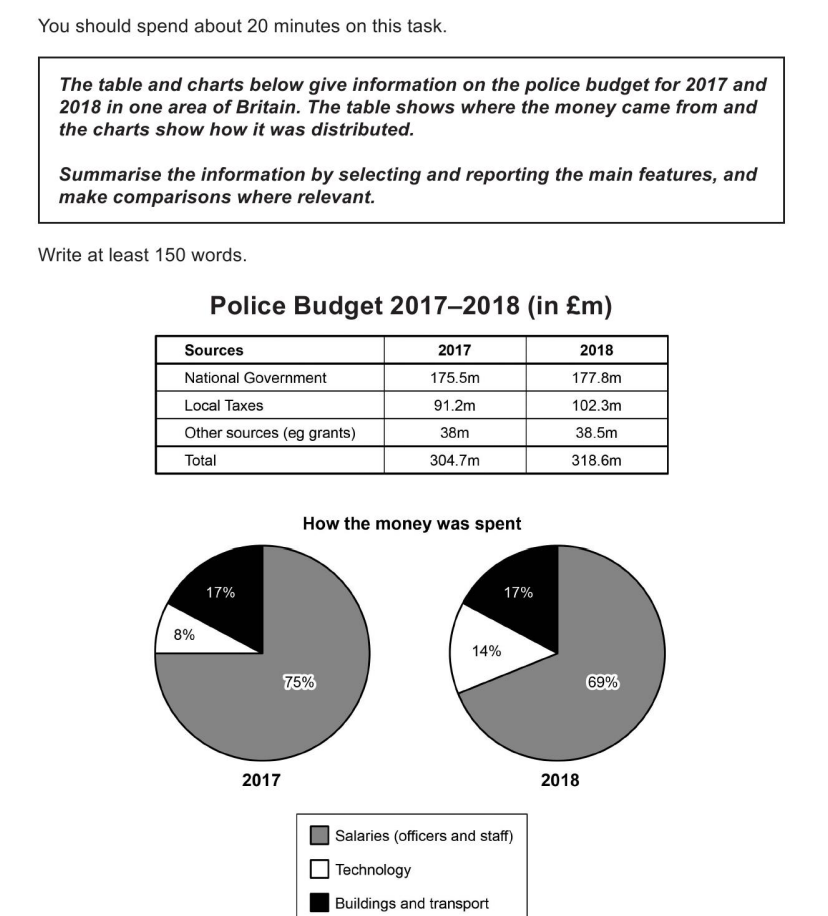
The provided table and pie charts illustrate where the police received their funds and how the money was used in 2017 and 2018.
In general, there was an increase in the total amount of money, in which the National Government remained the largest source. Also, the lion’s share of the budget was spent on personnel’s salaries.
To be specific about the sources of income, the money received from the National Government’s budget, which was always the largest source, went up slightly from 175.5 in 2017 to 177.8 million pounds in 2018. A sharp growth was seen in that of local taxes, from 91.2 to 102.3 million pounds, while the figure for other sources such as grants experienced a marginal rise.
In terms of distribution, three-quarters of the budget was paid for the salaries of officers and staff in 2017. Although this figure reduced to 69% in 2018, it was still the largest part. The costs of buildings and transport accounted for 17% of total expenditure in both years. However, this period witnessed a considerable increase, from 8% to 14%, in the expenditure on technology. (188w, band 7.0)
Vocabulary highlights:
- fund/ budget [n]: an amount of money provided, collected, received for a purpose
- the lion’s share [n phr]: the largest part
- use (money) for sth = allocate (money) to sth = spend (money) on sth
- personnel [n, plural]: people working for a company, organization, or the armed forces
- account for [v phr]: form/ make up/ constitute a part (%) in a total.
- witness/ see [v]: Time/place + see/witness + an event/action = An event/action happened at that time/place.
Xem thêm cách viết bài cùng dạng nha:
3. Writing Task 1 - Bar chart
Link video: https://www.facebook.com/ielts.fighter/videos/504241224874559/
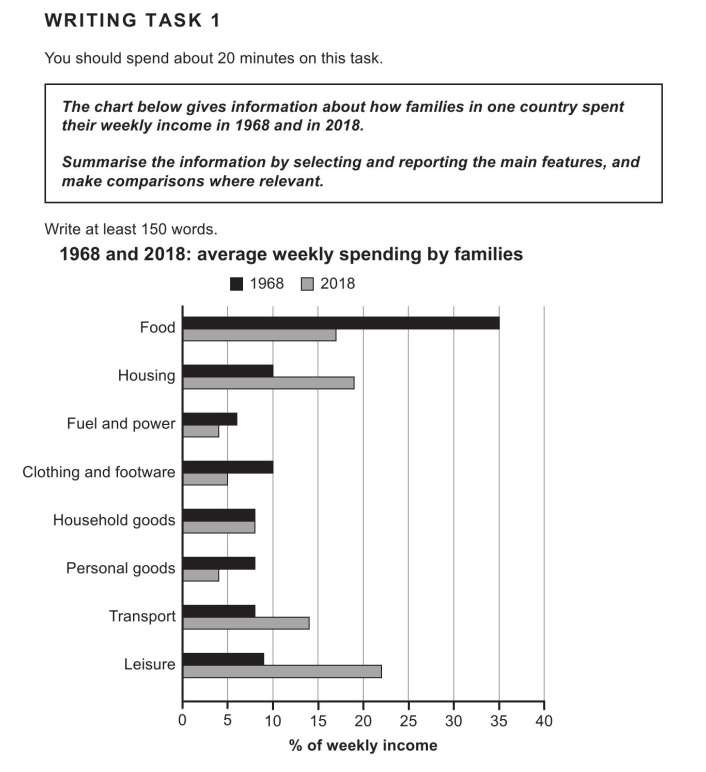
The provided bar chart illustrates the percentages of average household expenditure on a weekly basis in one country in 1968 and 2018
In general, after 5 decades, the proportion of spending on food reduced significantly while there were sharp increases in the figures for housing, transport, and leisure. As a result, the largest cost switched from food to leisure.
To be specific, 35% of families’ weekly income, which was the highest proportion in 1968, was used for food. In 2018, however, this figure dropped by half to approximately 17%. The percentages of the family budget allocated to clothing and footwear, fuels and power, and personal goods also experienced similar declines, so these figures ranged from 4% to 5% in 2018. Only that of household goods remained unchanged at 8%.
In contrast, this 50-year period witnessed a leap in the cost of leisure, from 9% to 22%, which eventually became the biggest cost. The spending on housing accounted for 10% of the family budget in 1968 and rose to 19% in 2018. Meanwhile, a moderate growth from 8% to 14% was also recorded in that of transport. (186w, band 7.0)
Vocabulary highlights:
- budget [n]: an amount of money provided, collected, received for a purpose
- use (money) for sth = allocate (money) to sth = spend (money) on sth
- account for [v phr]: form/ make up/ constitute a part (%) in a total.
- witness/ see [v]: Time/place + see/witness + an event/action = An event/action happened at that time/place.
- spending on sth [n]: expenditure on sth = the amount of money which was spent on sth
- range from … to … [v phr]: nằm trong khoảng từ giá trị nhỏ nhất đến giá trị lớn nhất
- leap [v,n]: increase rapidly [v], a rapid increase [n]
- eventually [adv]: finally, in the end, after a long period or process
4. Writing Task 1 - Linegraph
Link video: https://www.facebook.com/ielts.fighter/videos/1228988591200274/
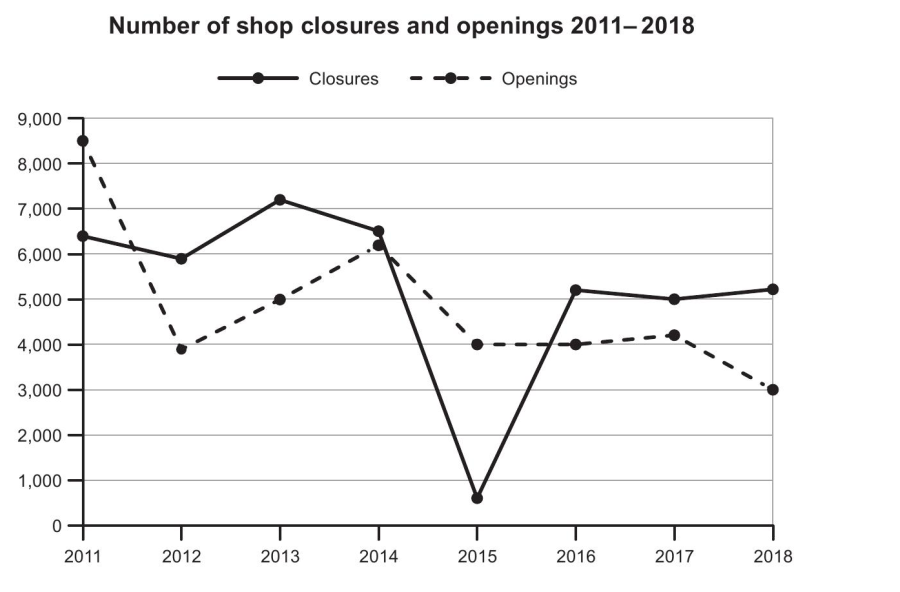
Introduction: mệnh đề danh từ (WH + mệnh đề chia V đúng)
Overview: nhận xét chung về tăng/ giảm: many major fluctuations - generally decreased
Body 1: openings
Body 2: closures
Sample:
The provided line graph illustrates how many retail stores were opened and shut down annually from 2011 to 2018.
Generally, after many fluctuations, both the numbers of shop closures and shop openings decreased.
Specifically about openings, there was a sharp decline from 8500 in 2011 to 4000 in 2012 in [the number of shops that started doing business]. Between 2014 and 2015, [this number] recovered to over 6000 but then dropped again back to 4000. In the next 2 years, [it] remained relatively stable and even showed signs of a slight increase. However, in 2018, only 3000 new stores were launched.
In terms of shop closures, after a slight reduction from about 6500 in 2011 to less than 6000 in 2012, [the number of stores that went out of business] rose and peaked at more than 7000 in 2013. However, [this number] started to fall and hit the bottom at 600 in 2015. The next year witnessed a spectacular rebound to more than 5000 in [this figure]. In the next 2 years, a period of relative stability was recorded in [this number] at over 5000, which was clearly higher than [the figure] for shop openings.
(195)
Take away:
- Sử dụng this number, this figure, it để đỡ nhắc lại
trong 3-4 câu văn liên tiếp cùng nói về 1 chỉ số
- Vocabulary:
Start [v] doing business: bắt đầu hoạt động kinh doanh
Commence/ Launch [v] a business: bắt đầu hoạt động kinh doanh
Go out of business [v]: đóng cửa/ ngừng hoạt động kinh doanh
Be shut down [v, passive]: (bị động) đóng cửa/ ngừng hoạt động kinh doanh
Shutdown [n]: sự đóng cửa/ ngừng hoạt động kinh doanh
Rebound / Recover [v, n]: tăng trở lại sau khi đã giảm
Trên đây là 4 bài mẫu chữa Writing Task 1 - Cambridge IELTS 17, các bạn tham khảo và luyện tập nha.
Link tải full pdf: https://drive.google.com/file/d/1dqQHsqkD4l3Ikgd5f3k9fctsea-EAzGd/view
Cùng tìm hiểu thêm cách viết dạng bài và bài mẫu Task 1 hay:
IELTS Writing Task 1 Horse Evolution Sample
Cách viết IELTS Writing Task 1 Process
